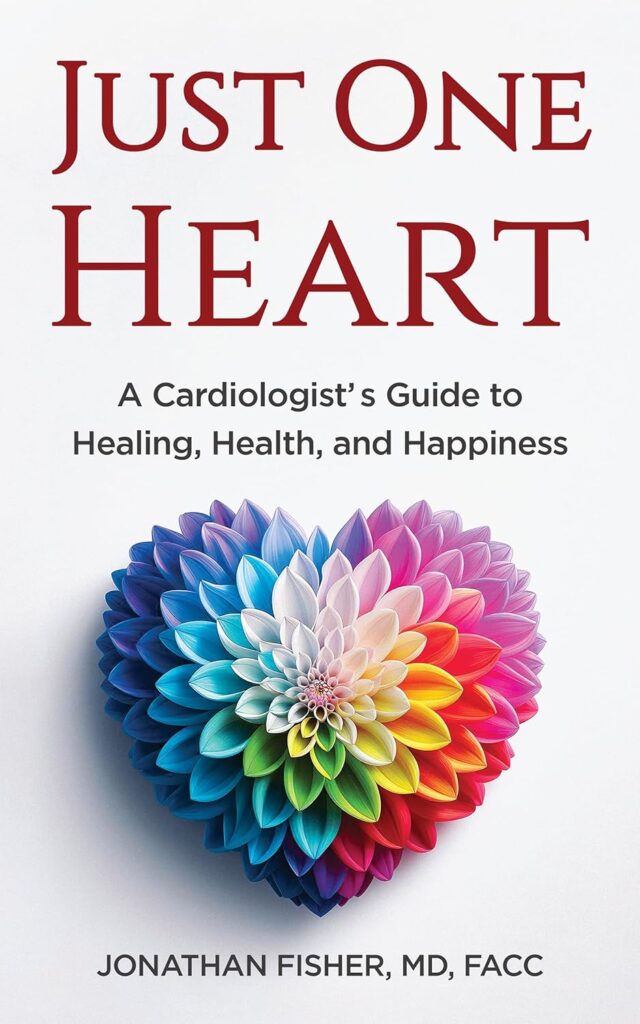“The best and most beautiful things in the world cannot be seen or even touched – they must be felt with the heart.”
— Helen Keller
In my journey of the heart, two atlases, seemingly worlds apart, converged to illuminate the interconnected dimensions of the heart. They helped me realize that the heart is not a singular entity but a multifaceted gem, each facet revealing a unique aspect of our human experience.
In 1994, during my first year of medical school, I was introduced to an atlas that would lay the foundation for my understanding of the heart. It was Frank H. Netter’s Atlas of Human Anatomy (2014). With its detailed pages and meticulous illustrations, this atlas unveiled the physical dimension of the heart, the biological marvel that sustains life itself. I marveled at the intricate network of arteries and veins, the synchronized dance of atria and ventricles, and the sheer elegance of its design. With its clinical precision, this atlas spoke to the scientist in me, and I eagerly absorbed its teachings.
But as my journey continued, I realized that healing and caring for the heart extended beyond physicality. It encompassed the emotional, social, and spiritual realms, dimensions that couldn’t be dissected in a lab but were equally vital. My academic studies left me wanting more, and I yearned for a deeper understanding.
Years later, another atlas captured my attention—focused not on the physical heart but on the myriad emotions that influence our lives. It was Brené Brown’s Atlas of the Heart: Mapping Meaningful Connection and the Language of Human Experience (2021). This atlas served as a kind of bookend to my medical training. It revealed the emotional heart, a terrain as complex and diverse as the physical organ it beats within. Her exploration and the wisdom of other teachers and scholars solidified my desire to be no longer a doctor of heart mechanics but a more well-rounded healer of hearts.
These combined insights shaped my patient interactions and generated genuine, heart-to-heart dialogues. Consultations became joint opportunities for discovery marked by shared resilience, hope, and humanity. Collaborations with colleagues and team members flourished similarly, infused with a renewed, shared mission.
One Heart, Four Dimensions, in Crisis
Our capacity for healing, health, and happiness is intricately tied to the well-being of the four dimensions of our heart, each symbolizing an essential aspect of our human existence. Understanding and nurturing these four dimensions is more critical than ever in today’s fast-paced and increasingly complex world. The first, the physical heart, is the biological organ that sustains life – the dimension modern Western Medicine focuses on most. The second, the emotional heart, mirrors our emotional health and feelings. The third dimension, the social heart, represents our social relationships and interactions. Lastly, the spiritual heart embodies our values, purpose, and connection with the universe. Each of these four heart dimensions faces significant challenges; we are witnessing a crisis in each. This book offers an integrated approach.
This “four dimensions of the heart” perspective synthesizes my experiences as a medical practitioner and my exploration beyond traditional allopathic cardiology. It’s a unique approach to the conventional practice of cardiology, and resonates with emerging holistic health models (Brassey et al. 2023).
Dr. Richard Carmona, the 17th Surgeon General of the United States, shared his thoughts on our current approach to healthcare (2022). He expressed his concerns about our current healthcare model’s segmented approach. “We’ve long focused on treating diseases instead of preventing them; even more critically, we’ve failed to see the person as a whole. We tend to treat symptoms in isolation.” Dr. Carmona emphasized the mind-heart connection, echoing ancient traditions that have always seen these two as intrinsically linked. “Our emotional, social, and spiritual well-being directly influences physical health. The heart and the mind are interconnected in ways that modern medicine is only beginning to understand.” He added, “We must educate the public and healthcare providers about the importance of seeing health from a broader perspective. To truly heal, we must address all facets of our being.”
The modern Western approach to health views the heart primarily as a mechanical organ, a pump responsible for circulating blood throughout our body. When problems arise, it proposes solutions typically involving medication or procedures to manage issues like blood pressure, cholesterol levels, or structural abnormalities. This singular focus often overlooks the interconnectedness of our physical health with our emotional, social, and spiritual well-being. As we confront an array of global health challenges, it becomes clear that this narrow view needs to be revised.
This is particularly pressing given the current global health landscape, where we see a rise in diseases influenced not just by physical factors but by lifestyle, mental health, and social dynamics. While the expansion of the heart’s concept to include emotional, social, and spiritual dimensions aligns with current trends in holistic health, such as those recognized by the McKinsey Health Institute, it’s a unique application outside the realm of the traditional practice of cardiology (Brassey et al. 2023). While resonating with emerging holistic health models and many pioneers in mind-body referenced in this book, this integrated “one heart” perspective synthesizes my experiences as a medical practitioner and my exploration beyond traditional allopathic cardiology.
Today, these four dimensions of the heart confront substantial challenges primarily driven by contemporary lifestyle habits, societal norms, and cultural shifts. The urgency of addressing these challenges is underscored by the alarming rise in lifestyle-related diseases affecting the physical heart and the escalating mental health crises impacting our emotional well-being.
In this book, we will explore these dimensions of the heart and understand how they shape our well-being, relationships, and connection to the world. I invite you on an adventure of self-discovery and growth that seeks to bridge the gap between the physical and emotional, the individual and societal, and the scientific and spiritual aspects of our lives. As we delve into the heart’s four dimensions, we will uncover the wisdom and practices that can help us navigate the challenges we face in each of them, ultimately leading us to a more holistic and fulfilling way of life. By the end of our trip together, we will arrive closer to understanding what it means to have “just one heart.”

Excerpted from Just One Heart: A Cardiologist’s Guide to Healing, Health, and Happiness, by Jonathan Fisher, Manuscripts Press (April 7, 2024)


